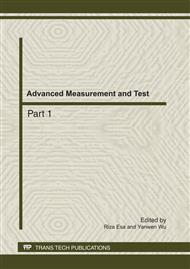p.421
p.426
p.430
p.436
p.442
p.447
p.452
p.456
p.462
Removing Direct Wave of Through-Wall Radar Based on Singular Value Decomposition
Abstract:
The problem of target detection which is affected by the direct wave is discussed in this paper. Singular Value Decomposition method is proposed for removing the direct wave. The echo signal is decomposed by use of Singular Value Decomposition method and the one-order eigenvalue of the eigenvalue matrix is set to zero, then the related components of echo signal are removed. The direct wave signal can be removed effectively using this method, and most of the target components of signal are preserved in the process of removing direct wave signal. HFSS simulation software is used for modeling and simulation, and the results show that the resolution of false target using Singular Value Decomposition method increases 11% compared with the Interference Canceling method for removing direct wave.
Info:
Periodical:
Pages:
442-446
Citation:
Online since:
July 2011
Authors:
Price:
Сopyright:
© 2011 Trans Tech Publications Ltd. All Rights Reserved
Share:
Citation:


